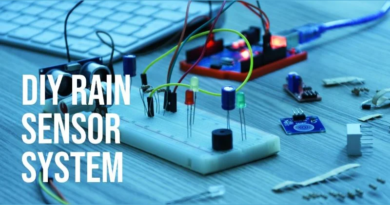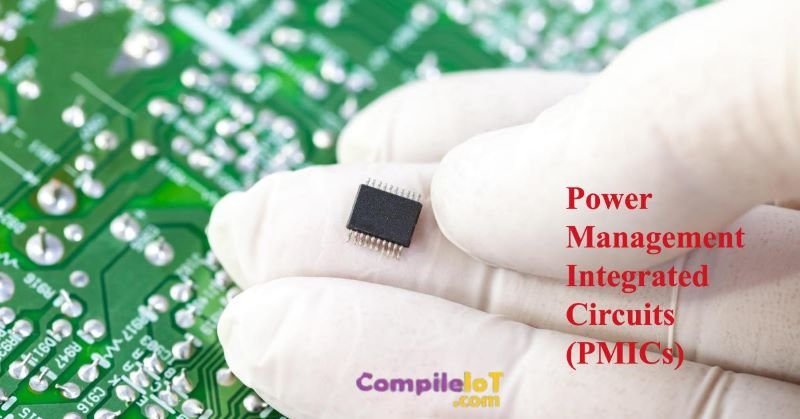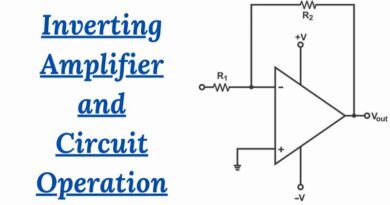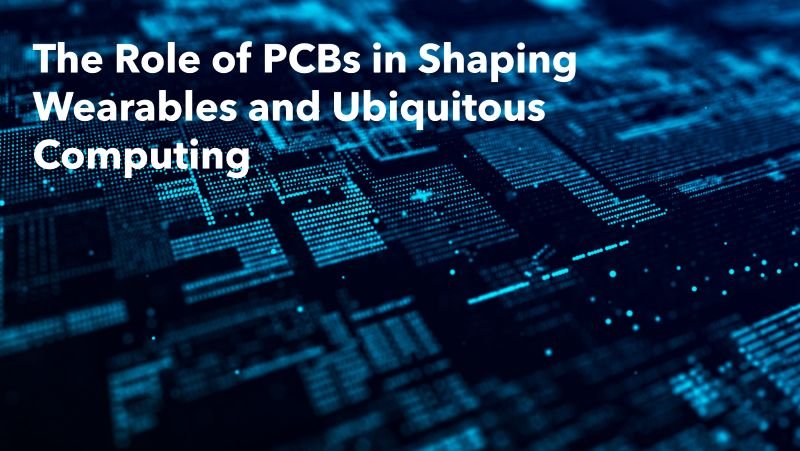Empowering Electronics: The Intersection of IoT and PCB Technology
Introduction
In this article, we will explore the intersection of IoT and PCB technology, examining how the integration of these two disciplines is driving innovation and shaping the future of electronics. We will discuss the evolution of PCBs, the rise of IoT, the challenges and solutions in designing IoT-enabled PCBs, and the future trends in this rapidly evolving field. Through this exploration, we aim to provide insights into the transformative potential of IoT-enabled PCBs and their impact on industries and society.
The Evolution of PCBs
Printed Circuit Boards (PCBs) have a rich history that dates back to the early 20th century. The first PCBs were developed in the 1930s and 1940s, primarily for military and aerospace applications. These early PCBs were made from materials such as Bakelite and phenolic resin, and they featured simple single-layer designs with copper traces on one side. Over the years, PCB technology has continued to evolve, driven by advancements in materials, manufacturing processes, and design techniques. One of the key milestones in the evolution of PCBs was the development of multi-layer PCBs in the 1960s. Multi-layer PCBs allowed for the integration of more components and the creation of denser and more compact circuits, making them ideal for applications where space is limited.
Another significant development in the evolution of PCBs was the introduction of surface-mount technology (SMT) in the 1980s. SMT allowed for the mounting of components directly onto the surface of the PCB, eliminating the need for through-hole components and further reducing the size and weight of electronic devices.
Today, PCBs are an integral part of modern electronics, used in a wide range of applications, from consumer electronics and telecommunications to automotive and medical devices. The continued advancement of PCB technology, including the development of flexible and rigid-flex PCBs, is enabling the creation of even smaller, more powerful, and more versatile electronic devices.
The Rise of IoT
The Internet of Things (IoT) is a revolutionary concept that refers to the network of interconnected devices, sensors, and systems that communicate and exchange data with each other over the internet. The concept of IoT is based on the idea of connecting physical objects to the internet, enabling them to collect and exchange data, and to be remotely monitored, controlled, and managed. This connectivity allows for the automation of various processes, leading to increased efficiency, improved decision-making, and enhanced user experiences.
The impact of IoT on various industries has been profound, transforming the way businesses operate and creating new opportunities for innovation and growth. In the healthcare industry, for example, IoT devices such as wearable health monitors and remote patient monitoring systems are revolutionizing patient care by enabling continuous monitoring and real-time data analysis. In the manufacturing industry, IoT-enabled sensors and systems are improving efficiency and productivity by providing real-time insights into equipment performance and production processes.
The Convergence of IoT and PCBs
The convergence of the Internet of Things (IoT) and Printed Circuit Boards (PCBs) is driving innovation in PCB design and manufacturing, enabling the development of smaller, more powerful, and more efficient electronic devices. IoT devices are becoming increasingly complex, with the need for more advanced features and functionalities such as wireless connectivity, sensors, and data processing capabilities. This has led to the development of IoT-enabled PCBs, which are designed to support these advanced functionalities and enable the creation of IoT devices that are smaller, more energy-efficient, and more reliable.
One of the key ways in which IoT is driving innovation in PCB design and manufacturing is through the development of flexible and rigid-flex PCBs. These PCBs are designed to be flexible or stretchable, allowing them to conform to irregular shapes or be used in applications where traditional rigid PCBs would not be suitable. This enables the creation of IoT devices that are more compact, lightweight, and durable, and can be used in a wider range of applications.
Another way in which IoT is driving innovation in PCB design and manufacturing is through the use of advanced materials such as ceramic, metal core, or high-frequency laminates. These materials are designed to provide better thermal conductivity, electrical insulation, and mechanical strength, enabling the creation of IoT devices that are more reliable and efficient.
IoT-Enabled PCB Design Considerations
Designing PCBs for IoT devices presents a unique set of challenges due to the complex nature of these devices and the diverse range of applications they are used in. Some of the key challenges faced in designing PCBs for IoT devices include:
- Power Consumption: IoT devices are often battery-powered and need to operate for extended periods without recharging. This requires careful consideration of power consumption in the design of the PCB, including the use of low-power components, efficient power management techniques, and optimized PCB layouts.
- Size Constraints: IoT devices are typically small and compact, requiring PCBs that are small and lightweight. This can be challenging when designing PCBs with multiple layers and complex circuitry. Solutions include the use of advanced materials such as ceramic, metal core, or high-frequency laminates, which provide better thermal conductivity, electrical insulation, and mechanical strength, enabling the creation of smaller and more efficient PCBs.
- Wireless Connectivity: Many IoT devices require wireless connectivity, such as Wi-Fi, Bluetooth, or cellular, which can be challenging to integrate into the PCB design. Solutions include the use of integrated wireless modules, such as System-on-Chip (SoC) solutions, which combine the wireless functionality with other components on the same chip, reducing the size and complexity of the PCB.
- Sensor Integration: IoT devices often include sensors for measuring various parameters such as temperature sensors, humidity, and motion. Integrating these sensors into the PCB design can be challenging due to the need for precise placement and routing of sensor traces. Solutions include the use of flexible PCBs, which allow for more freedom in sensor placement and routing.
IoT-Driven Innovations in PCB Manufacturing
The integration of Internet of Things (IoT) technologies into Printed Circuit Board (PCB) manufacturing processes is driving innovation and efficiency in the production of PCBs. IoT technologies are being used to monitor and optimize various aspects of the manufacturing process, from equipment performance to product quality, leading to improved productivity, reduced costs, and enhanced product quality. The major key ways in which IoT technologies are being integrated into PCB manufacturing processes is through the use of sensors and data analytics. Sensors are being used to monitor various parameters such as temperature, humidity, and vibration in the manufacturing environment, as well as the performance of equipment such as CNC machines, pick-and-place machines, and soldering equipment. This data is then analyzed in real-time to identify potential issues, optimize processes, and improve overall efficiency.
IoT Security in PCBs
IoT Security in PCBs: Importance of cybersecurity in IoT devices and the role of PCBs in ensuring data integrity and device security. Best practices for securing IoT-enabled PCBs, such as encryption, authentication, and secure firmware updates.
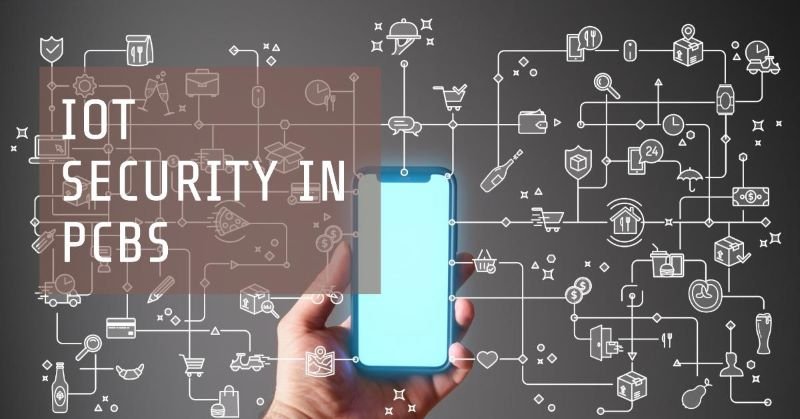
As the Internet of Things (IoT) continues to grow, the importance of cybersecurity in IoT devices cannot be overstated. IoT devices are often connected to the internet and collect and exchange sensitive data, making them vulnerable to cyberattacks. PCBs play an important role in ensuring the security of IoT devices by implementing security measures such as encryption, authentication, and secure firmware updates.
- Encryption is a key security measure that protects data from unauthorized access by encrypting it before it is transmitted over the internet. This ensures that even if the data is intercepted, it cannot be read without the decryption key. PCBs can implement encryption algorithms such as AES (Advanced Encryption Standard) to protect data from unauthorized access.
- Authentication is another important security measure that verifies the identity of users and devices before granting access to sensitive data. PCBs can implement authentication protocols such as TLS (Transport Layer Security) to ensure that only authorized users and devices can access the data.
- Secure firmware updates are essential for ensuring that IoT devices remain secure over time. PCBs can implement secure boot and update mechanisms that verify the integrity of firmware updates before they are installed, preventing attackers from installing malicious firmware.
IoT and PCB Lifecycle Management
The lifecycle management of IoT devices is a critical aspect of ensuring their long-term reliability and sustainability. This includes selecting the right materials and components, designing the layout and routing of the PCB, and ensuring that the PCB meets the required specifications and standards. PCBs must also be designed with future upgrades and modifications in mind, to ensure that the device can be easily updated and maintained over time.
Once the device is deployed, PCBs continue to play a role in ensuring its long-term reliability and sustainability. This includes monitoring the performance of the device and the PCB, identifying any issues or defects, and taking corrective action to address them. PCBs can also be used to implement features such as remote monitoring and diagnostics, which can help identify and address issues before they become serious problems.
At the end of the device’s lifecycle, PCBs play a role in ensuring that the device is disposed of in an environmentally responsible manner. This includes removing any hazardous materials from the PCB, such as lead or mercury, and recycling or disposing of the PCB in accordance with local regulations and standards.
IoT and PCB Standard and Regulations
The regulatory landscape for Internet of Things (IoT) devices and Printed Circuit Boards (PCBs) is complex and constantly evolving. There are a number of standards and regulations that govern the design, manufacturing, and use of IoT devices and PCBs, and compliance with these standards is essential for ensuring product quality and safety.
Key standards like ISO 13485 and IEC 60601 ensure safety and effectiveness of medical IoT devices. Compliance with FDA regulations is crucial for US market, along with other industry-specific regulations governing IoT devices and PCBs.
IoT and PCB Testing and Validation
Testing and validation ensure that the PCBs meet the required specifications and standards, and that they are reliable, safe, and effective for their intended use. Testing and validation also help identify any issues or defects in the PCBs, allowing manufacturers to take corrective action before the PCBs are deployed in the field.
One of the key reasons why testing and validation are important in IoT-enabled PCBs is to ensure that the PCBs meet the required specifications and standards. This includes ensuring that the PCBs are designed and manufactured to the highest standards, and that they meet the required performance, reliability, and safety requirements. Testing and validation also help ensure that the PCBs are compatible with other components and systems, and that they can be easily integrated into the final product.
Another important reason why testing and validation are important in IoT-enabled PCBs is to identify any issues or defects in the PCBs. This includes identifying any manufacturing defects, such as soldering defects or component failures, as well as any design issues, such as signal integrity or electromagnetic compatibility (EMC) issues. Testing and validation also help identify any issues with the PCBs’ functionality, such as incorrect operation or performance issues.
Future Trends in IoT and PCB
The Internet of Things (IoT) and Printed Circuit Board (PCB) technology are rapidly evolving, driven by advancements in materials, manufacturing processes, and design techniques. Some of the emerging trends in IoT and PCB technology include:
- Edge Computing: Edge computing is a distributed computing paradigm that brings computation and data storage closer to the location where it is needed, improving response times and reducing bandwidth usage. This trend is driving the development of IoT devices with more powerful processing capabilities, enabling them to perform more complex tasks locally without relying on cloud-based services.
- AI Integration: Artificial Intelligence (AI) is being integrated into IoT devices to enable them to analyze and process data in real-time, making them more intelligent and responsive. This trend is driving the development of IoT devices with built-in AI capabilities, such as voice recognition, image recognition, and predictive analytics.
- 5G Connectivity: The rollout of 5G networks is enabling faster and more reliable wireless connectivity, driving the development of IoT devices with higher bandwidth and lower latency. This trend is driving the development of IoT devices with more advanced wireless connectivity, such as 5G modems and antennas.
- Flexible and Rigid-Flex PCBs: Flexible and rigid-flex PCBs are becoming increasingly popular for IoT devices, enabling them to be more compact, lightweight, and durable. This trend is driving the development of IoT devices with more flexible and adaptable form factors, such as wearable devices and IoT sensors.
- Advanced Materials: The use of advanced materials such as ceramic, metal core, or high-frequency laminates is enabling the development of IoT devices with better thermal conductivity, electrical insulation, and mechanical strength. This trend is driving the development of IoT devices with improved reliability and performance.
Conclusion
In conclusion, the future of IoT and PCB technology is bright, with emerging trends such as edge computing, AI integration, 5G connectivity, flexible and rigid-flex PCBs, and advanced materials driving innovation and shaping the future of electronics. By staying up-to-date with these trends and leveraging the latest technologies, manufacturers can develop IoT devices that are more intelligent, more reliable, and more efficient than ever before.

